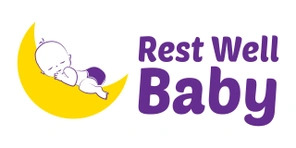Blog

Navigating Sleep When Your Child Is Sick
Sick Day Sleep Survival: Maintaining Your Child's Routine During Illness
A stuffy nose, cough, or fever can challenge even the most established routine, leading to fragmented sleep for everyone. While comfort and care are essential, the more we deviate from our normal practices, the greater the chance we unintentionally create a powerful new sleep habit or reintroduce an old one that will be more difficult to undo once health returns. Here’s a plan to survive the sick days by prioritizing consistency and starting small with additional support.
1. Maintain the Routine, Adjust the Time, Within Reason
A sick child frequently needs more sleep than usual, but the sequence of events leading up to sleep should remain exactly the same. Keep the bedtime ritual—bath (if tolerated), book, and song—consistent. This signals to your child’s body that despite feeling unwell, the security of their routine is intact. They may need an earlier bedtime or longer naps, but remember that sleeping all day can lead to wakefulness at night, even when sick. Offer additional sleep within reason. Follow their cues, but ensure they have appropriate wake windows to protect their nighttime sleep structure.
2. Practice Intentional Care: Start Small
This is where we try to avoid creating new dependencies. When your child wakes up overnight, go to them and first provide only the minimal support needed. For example, start with a quick check, medicine if due, or some gentle verbal reassurance. If that doesn't work after a few minutes, you can escalate the support—maybe sitting beside the crib or offering a quick cuddle. If your child is truly miserable or very sick you can of course consider more significant changes, like holding them until they drift off. By starting small, you avoid defaulting to a high level of assistance that may not even be required. Every time you offer care, do so in their sleep space. Avoid moving them from their usual crib or bed into yours. Keeping their sleep environment consistent ensures that your physical presence is the temporary variable, not the permanent location.
3. Create a Therapeutic Sleep Environment
Focus on physical adjustments that alleviate symptoms and allow them to rest independently. These simple changes can make a huge difference in their ability to stay asleep. For example: Humidity: Use a cool-mist humidifier to ease congestion and coughs. Place it safely out of reach. If congestion is severe, always check with your pediatrician for safe relief measures like saline spray. Pain Relief Timing: Coordinate with your pediatrician to give appropriate pain relievers just before bedtime to maximize pain-free sleep.
4. The Quick Return to Normal
Once your child is fever-free and showing significant improvement for 24 hours, it's time to gently ease back into the routine. If you offered extra assistance during the sickness, start phasing it out. A small bump in night-waking is normal, but usually, within 2-3 nights, they'll remember their independent sleep skills because the foundation of the routine never changed. Illness is a part of childhood, but by being intentional with your support and mindful of daytime sleep limits, you can protect your child's great sleep habits.
Want to learn more? Book your 30-minute Sweet Dreams Starter Call today and discover how I can help your family enjoy the gift of sleep.
Yours in sleep,
Tracie / Rest Well Baby
www.restwellbaby.com
Tracie Kesatie is a Certified Gentle Sleep Coach dedicated to helping families with little ones 0-10 years of age achieve a restful night's sleep.
Disclaimer: This article provides general information and is not intended as medical advice. Always consult with your pediatrician for any concerns about your child's health.
Tracie Kesatie
Certified Gentle Sleep Coach
Blog





